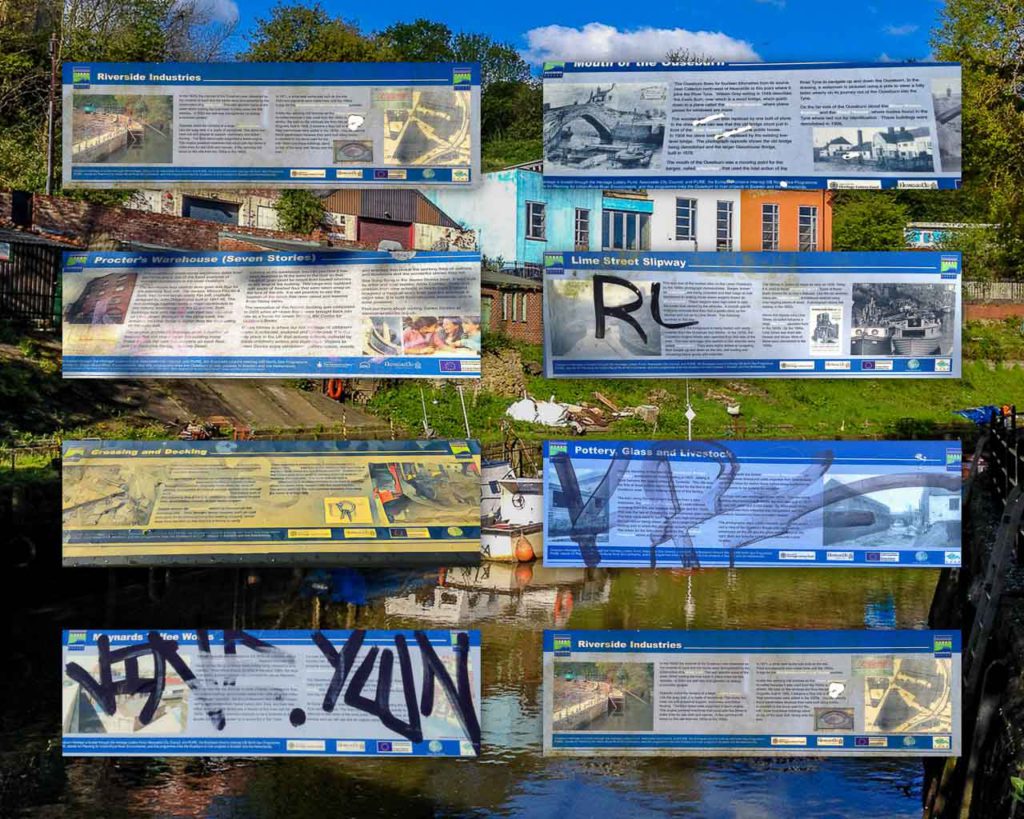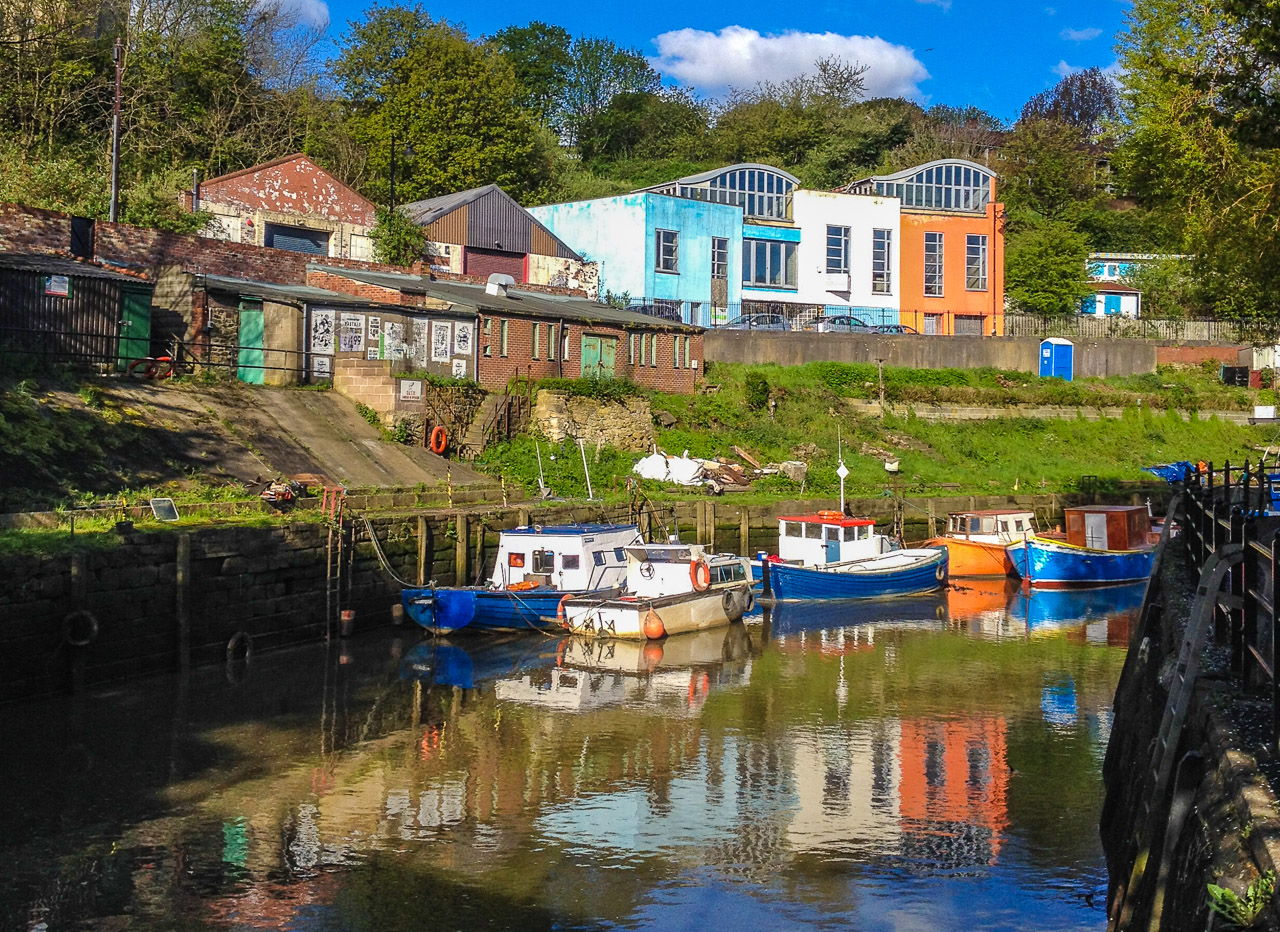Ouseburn
Ouseburn Riverside, one of the most interesting areas of Newcastle, described by the Guardian as Newcastle’s Shoreditch, now a place for creatives, but once a hive of industry. Vandals have rendered unintelligible many of the Ouseburn heritage panels. but their text is preserved below.
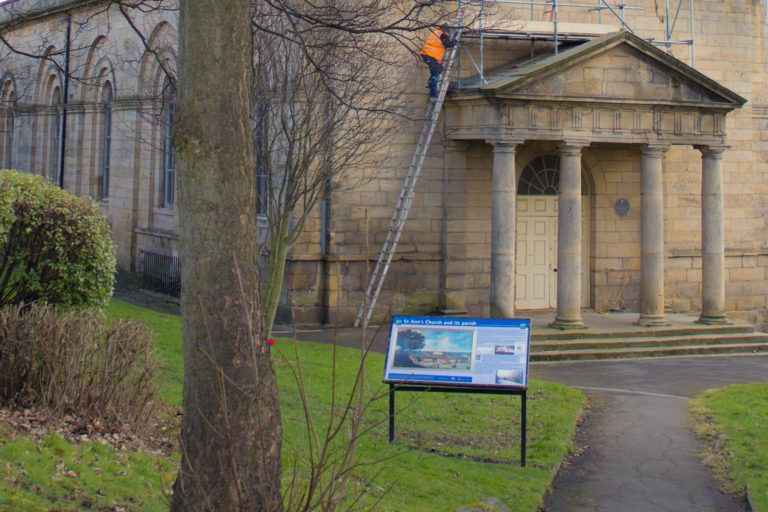
St Ann’s
St. Ann’s is a Grade 1 listed church consecrated in 1768. There has been a church on this site since medieval times. The present church was largely built with stone from the City Walls. The churchyard is among the last within the city to be closed for burials and is the resting place of many…
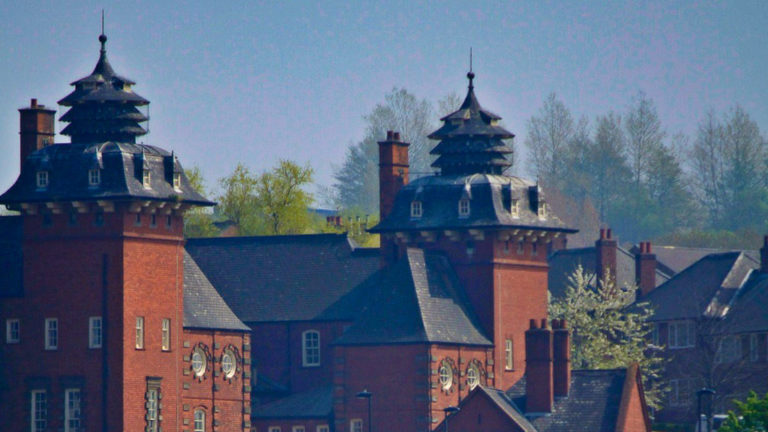
Mouth of the Ouseburn
The Ouseburn flows for fourteen kilometres from its source near Callerton north-west of Newcastle to this point where it joins the River Tyne. William Grey, writing in 1649, describes ‘the Ewes Burn, over which is a wooden bridge, which goeth down to a place called Glasse Houses where plaine glasse for windowes are made’. The…
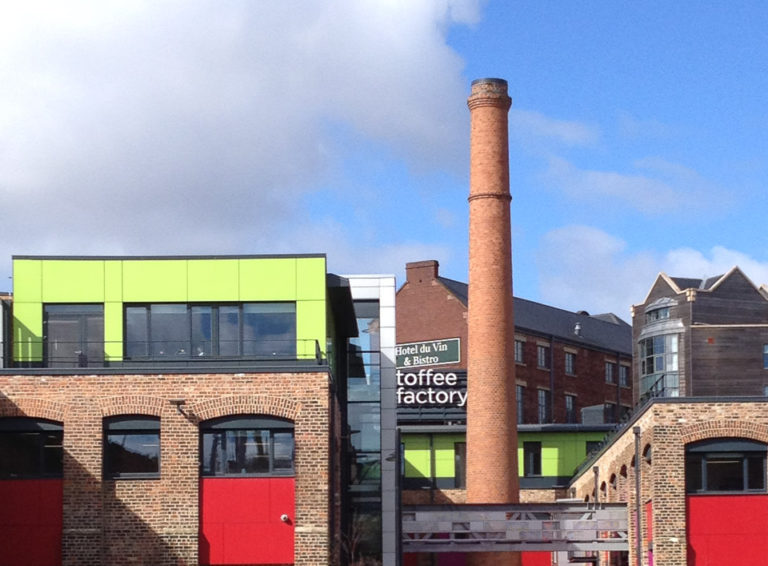
Maynards Toffee Works
The Lower Ouseburn Valley has more than its fair share of information panels or plaques. There are nine listed here, all of which are next to the river and can be found easily by anyone walking on the riverside path. Some of the panels have been damaged or are difficult to read, the textual contents…

Lime Street Slipway
This is one of the busiest sites on the Lower Ouseburn, Barges, known as wherries, are being unloaded and their cargo of coal transferred to waiting horse-drawn wagons known as block-carts. These wagons are high sided to take the loose coal carried by the wherries. A smooth granite trackway ensured that they had a gently…

Pottery, Glass and Livestock
You are standing on the site of Ouseburn Bridge Pottery, established by Robert Maling in 1817. Maling & Sons became the largest pottery on Tyneside. This site was the first of three pottery works established by the firm in the Ouseburn area. |Today nothing remains of this factory. The kilns lining the wall behind you…
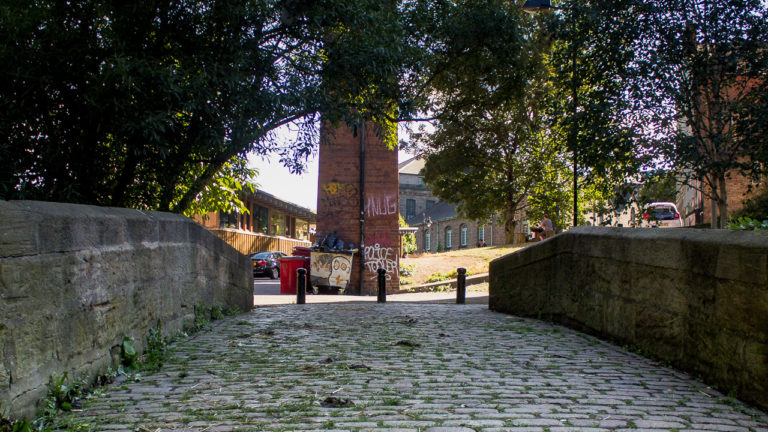
Crossing and Docking
This crossing point was originally a ford. It was one of the oldest crossing points on the Ouseburn, and was probably in use from Roman times. The ford is now a slipway but at low tide you can see granite paving laid end-on to form a smooth surface through the cobbles. Originally there were two…
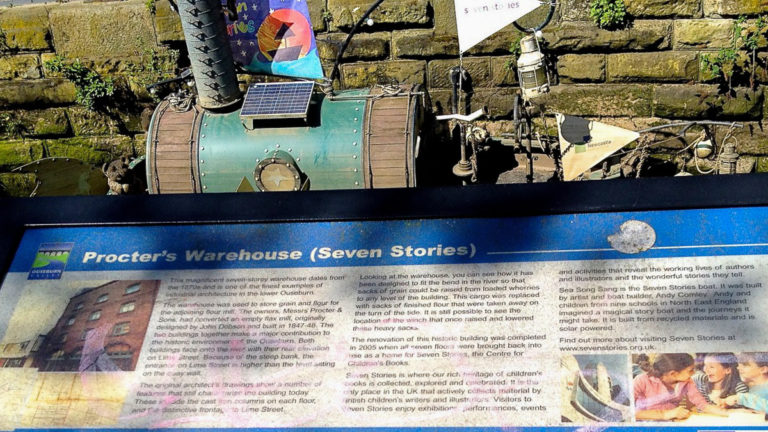
Procters Warehouse (Seven Stories)
This magnificent seven-storey warehouse dates from the 1870s and is one of the finest examples of industrial architecture in the lower Ouseburn. The warehouse was used to store grain and flour from the adjoining flour mill. The owners Messers Proctor & Sons, had converted an empty flax mill, originally designed by John Dobson and built…
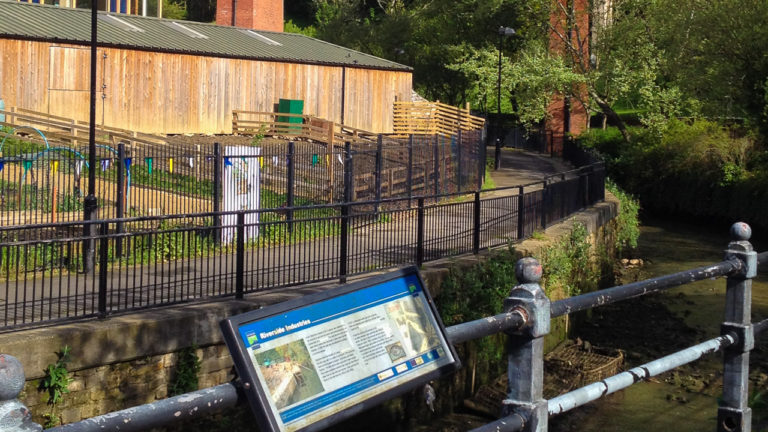
Riverside Industries
In the 1820s the channel of the Ouseburn was deepened by the removal of sand and the banks were strengthened by the construction of a quay wall. This wall absorbs some of the water whilst holding the river-bank in place when the tide recedes. In 2003, the wall was strengthened by adding a concrete parapet….
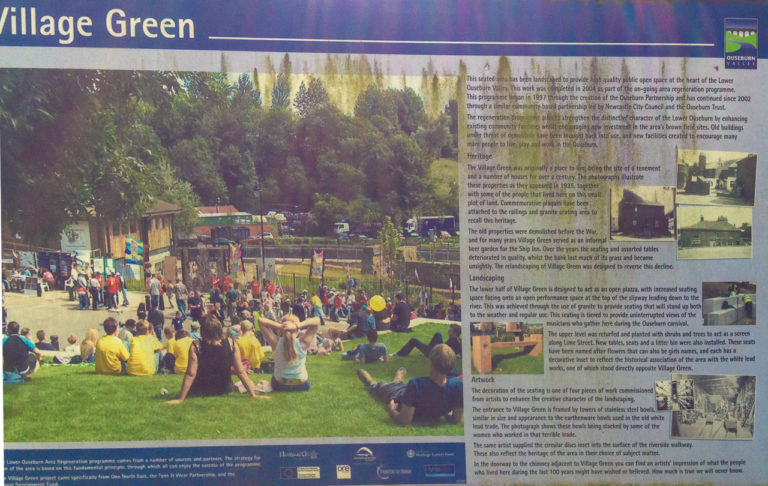
Ouseburn Village Green
The Village Green was originally a place to live, being the site of a tenement and a number of houses for over a century. commemorative plaques have been attached to the railings and granite seating area to recall this heritage. The old properties were demolished before the War and for many years Village Green served…
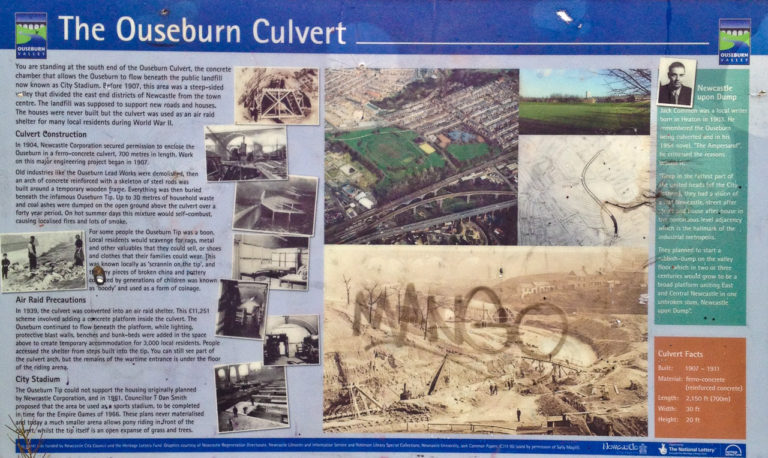
Ouseburn Culvert
You are standing at the south end of the Ouseburn Culvert, the concrete chamber that allows the Ouseburn to flow beneath the public landfill now known as City Stadium. Before 1907, this area was a steep-sided valley that divided the east end districts of Newcastle from the town centre. The landfill was supposed to support…
